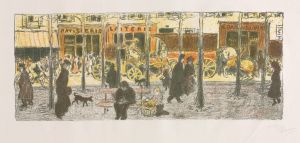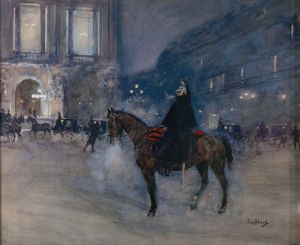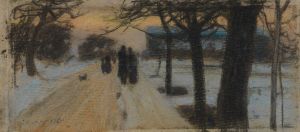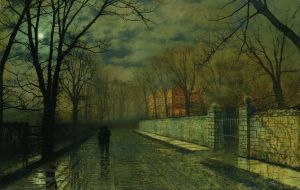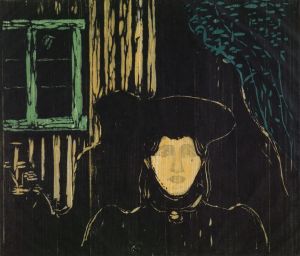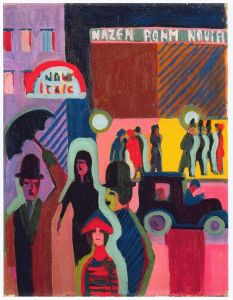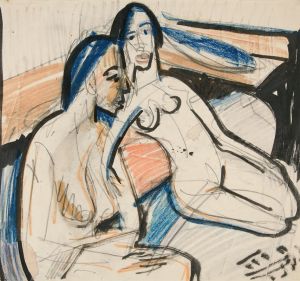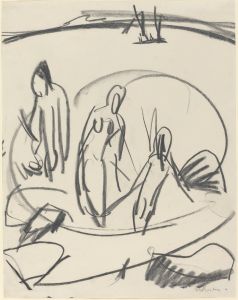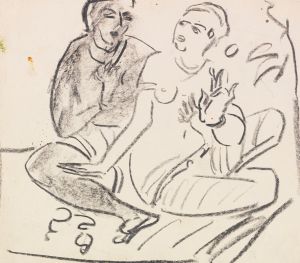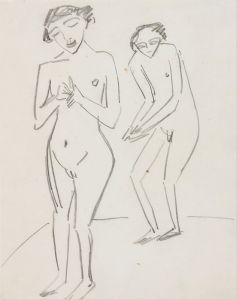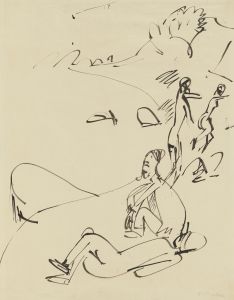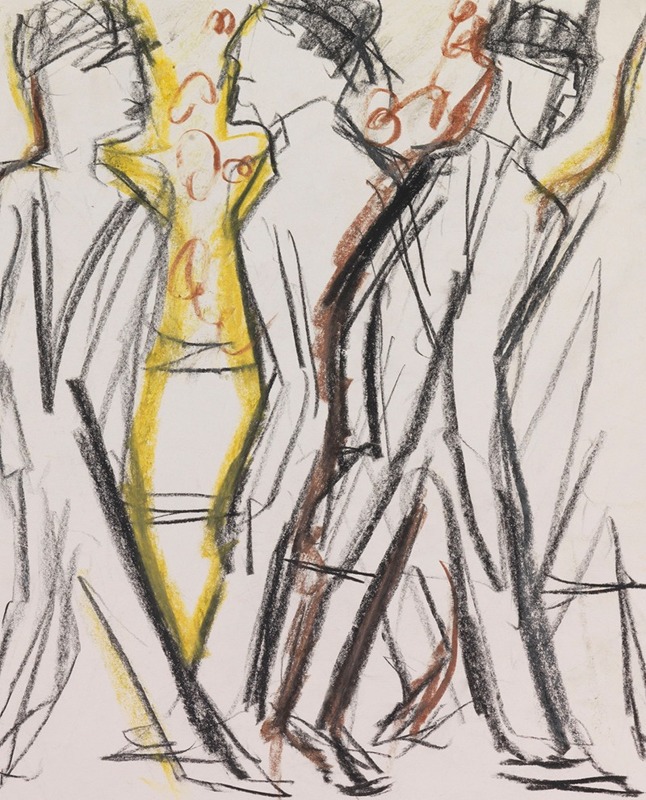
Passanten auf der Straße
A hand-painted replica of Ernst Ludwig Kirchner’s masterpiece Passanten auf der Straße, meticulously crafted by professional artists to capture the true essence of the original. Each piece is created with museum-quality canvas and rare mineral pigments, carefully painted by experienced artists with delicate brushstrokes and rich, layered colors to perfectly recreate the texture of the original artwork. Unlike machine-printed reproductions, this hand-painted version brings the painting to life, infused with the artist’s emotions and skill in every stroke. Whether for personal collection or home decoration, it instantly elevates the artistic atmosphere of any space.
"Passanten auf der Straße" (Pedestrians on the Street) is a painting by the German expressionist artist Ernst Ludwig Kirchner, created in 1914. Kirchner was a founding member of the influential artist group Die Brücke (The Bridge), which played a crucial role in the development of Expressionism in early 20th-century Germany. The painting is a significant example of Kirchner's work during this period, reflecting his interest in urban life and the psychological impact of modernity.
The painting depicts a bustling street scene in Berlin, a city that fascinated Kirchner and provided endless inspiration for his work. The composition is dynamic, with figures moving in various directions, capturing the energy and chaos of city life. Kirchner's use of bold, exaggerated lines and vibrant colors is characteristic of his style, emphasizing the emotional intensity and subjective experience of the scene.
Kirchner's technique in "Passanten auf der Straße" involves a combination of sharp, angular forms and a somewhat distorted perspective, which creates a sense of movement and urgency. The figures in the painting are elongated and stylized, a common feature in Kirchner's work that conveys a sense of alienation and disconnection, themes that were central to the Expressionist movement. The faces of the pedestrians are often mask-like, devoid of individual features, which further emphasizes the anonymity and impersonality of urban life.
The painting also reflects Kirchner's interest in the psychological effects of modernity. The rapid industrialization and urbanization of the early 20th century brought about significant changes in social structures and individual experiences. Kirchner and his contemporaries were keenly aware of these changes and sought to express the resulting anxieties and tensions through their art. "Passanten auf der Straße" can be seen as a visual exploration of these themes, capturing the sense of unease and disorientation that characterized the modern metropolis.
Kirchner's work was heavily influenced by his surroundings and personal experiences. During the time he created "Passanten auf der Straße," he was living in Berlin, a city that was undergoing rapid transformation. The vibrant street life, with its mix of different social classes and constant activity, provided a rich source of material for his art. Kirchner's depiction of the city is both a celebration of its vitality and a critique of its dehumanizing aspects.
"Passanten auf der Straße" is part of a larger body of work that Kirchner produced during his Berlin years, which includes numerous street scenes and portraits. These works are considered some of his most important contributions to the Expressionist movement and have been widely studied and exhibited. Kirchner's ability to capture the essence of urban life and the psychological impact of modernity has made him one of the most significant artists of his time.
Today, "Passanten auf der Straße" is held in high regard and is part of the collection of the Brücke-Museum in Berlin, which houses many of Kirchner's works. The painting continues to be celebrated for its innovative style and its powerful depiction of early 20th-century urban life. Through his art, Kirchner offers a window into the complexities of modern existence, making "Passanten auf der Straße" a timeless piece that resonates with contemporary audiences.





